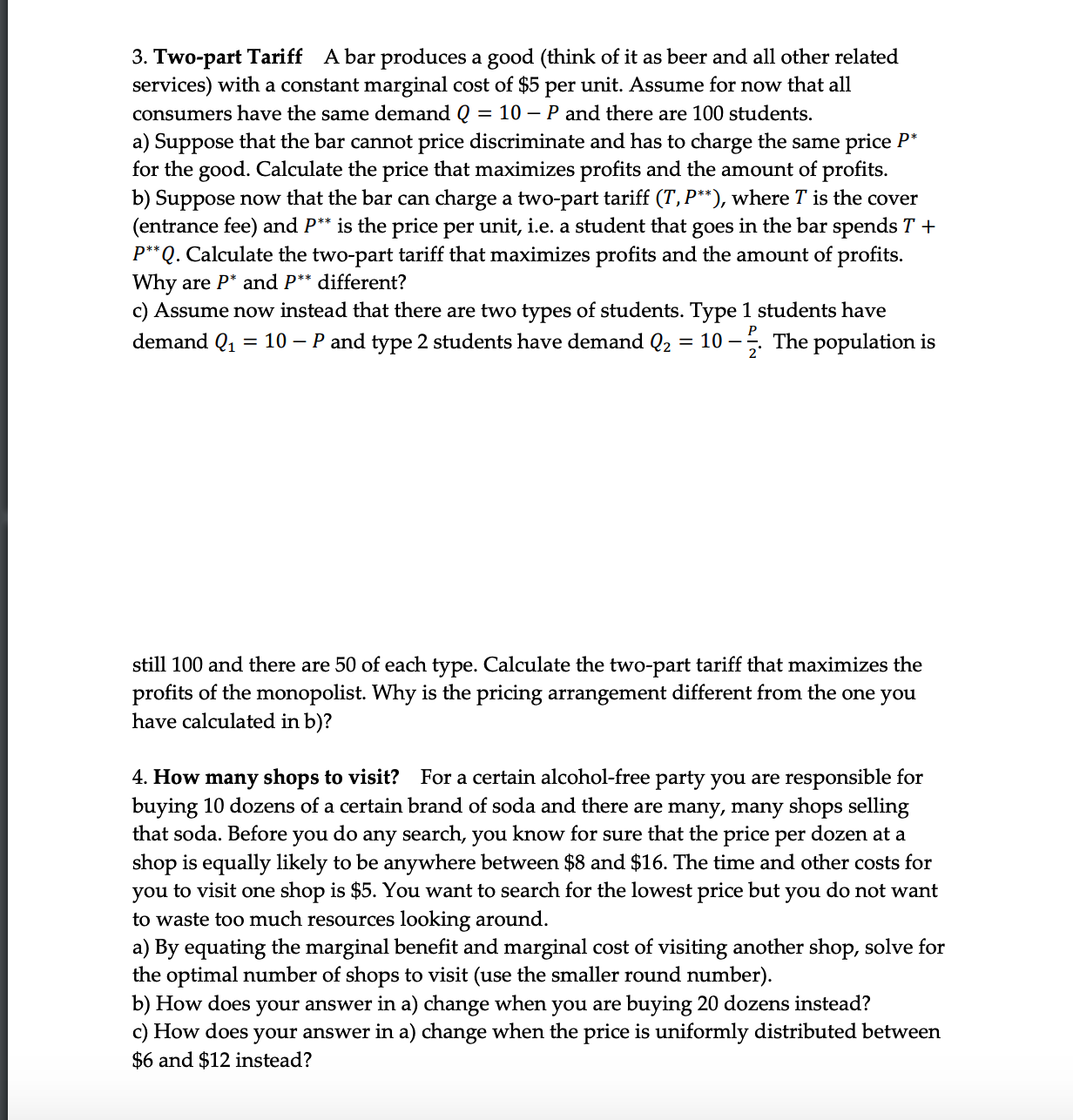Answered step by step
Verified Expert Solution
Question
1 Approved Answer
A bar produces a good (think of it like beer and all other related services) with a constant marginal cost of $5 per unit. Assume
A bar produces a good (think of it like beer and all other related
services) with a constant marginal cost of $5 per unit. Assume for now that all
consumers have the same demand Q = 10 ? P and there are 100 students.

Step by Step Solution
There are 3 Steps involved in it
Step: 1

Get Instant Access to Expert-Tailored Solutions
See step-by-step solutions with expert insights and AI powered tools for academic success
Step: 2

Step: 3

Ace Your Homework with AI
Get the answers you need in no time with our AI-driven, step-by-step assistance
Get Started


